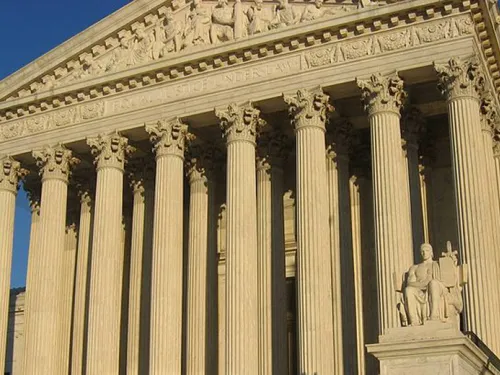Suspicious people may often be identified by their behavior. While no one behavioral activity is proof that someone is planning to act inappropriately (and many of the following behavioral indicators are perfectly consistent with innocent behavior), these factors can help you assess whether someone poses a threat. Behavioral factors to watch for include:
- Nervousness, nervous glancing or other signs of mental discomfort/being ill-at-ease. This may include sweating, "tunnel vision" (staring forward inappropriately), and repeated inappropriate prayer (e.g., outside the facility) or muttering. This may also include repeated entrances and exits from the building or facility.
- Inappropriate, oversize, loose-fitting clothes (e.g., a heavy overcoat on a warm day).
- Keeping hands in pockets or cupping hands (as in holding a triggering device).
- Constantly favoring one side or one area of the body as if wearing something unusual/uncomfortable (e.g., a holster). Pay attention to a person constantly adjusting waistbands, ankles, or other clothing. Projected angles under clothing may also be indicative of a firearm, e.g., at the waist or the ankle. Suicide bombers have been known to repeatedly pat themselves to verify that the bomb vest or belt is still attached.
- Carrying packages (see below regarding food donations).
- Lack of understanding of basic religious procedure/norms appropriate to the institution such as a synagogue.
Security people should be told, where possible, to observe people as they exit their cars; by watching how they adjust clothing and how they approach the building, they can look for signs that a person might be carrying a weapon, etc.
The most important thing is to be observant. For example, Israelis have become aware that some suicide bombers shaved off beards prior to committing their acts, thus leaving untanned skin and unusual facial tan lines. (The majority of suicide bombers there have been males, 18 - 27). Some also anointed themselves with scented oil, which may be obvious to someone in their vicinity.
While, again, no one factor is a certain indicator of a problem, once a problem is identified, ushers and security personnel have three options: do nothing, investigate and decide whether to take emergency steps, or immediately take emergency steps. This is a decision only you can make in light of the circumstances, your personal comfort level and safety considerations.
If you choose to investigate, greet the person in a friendly fashion, asking "Can I be of assistance?" or "Welcome, is this your first time here?" (Your membership committee will appreciate this gesture). Evasive or unusual answers may trigger your emergency procedures. Excuse yourself and initiate your procedures, perhaps by using a pre-determined code-word with your colleagues. If you choose to admit the person to the sanctuary pending assistance (e.g., arrival of police) invite the person to sit on an aisle seat. Assign an usher to inconspicuously monitor the location of the individual.
Make sure the dispatcher understands the emergency nature of the call and the need for a law enforcement response without sirens. Off-duty officers generally work armed and are aware of security procedures.
If you remain suspicious, trust your instincts.
If the person leaves immediately, you should call the police anyway.
This guide is intended to help institutions become aware of some basic security considerations. It is not intended to provide comprehensive, institution-specific advice on security matters nor is it meant to replace the advice of a security professional. For comprehensive, institution-specific security advice, a security professional should be consulted. ADL is not responsible for any loss or damage arising out of the use or misuse of this information.









